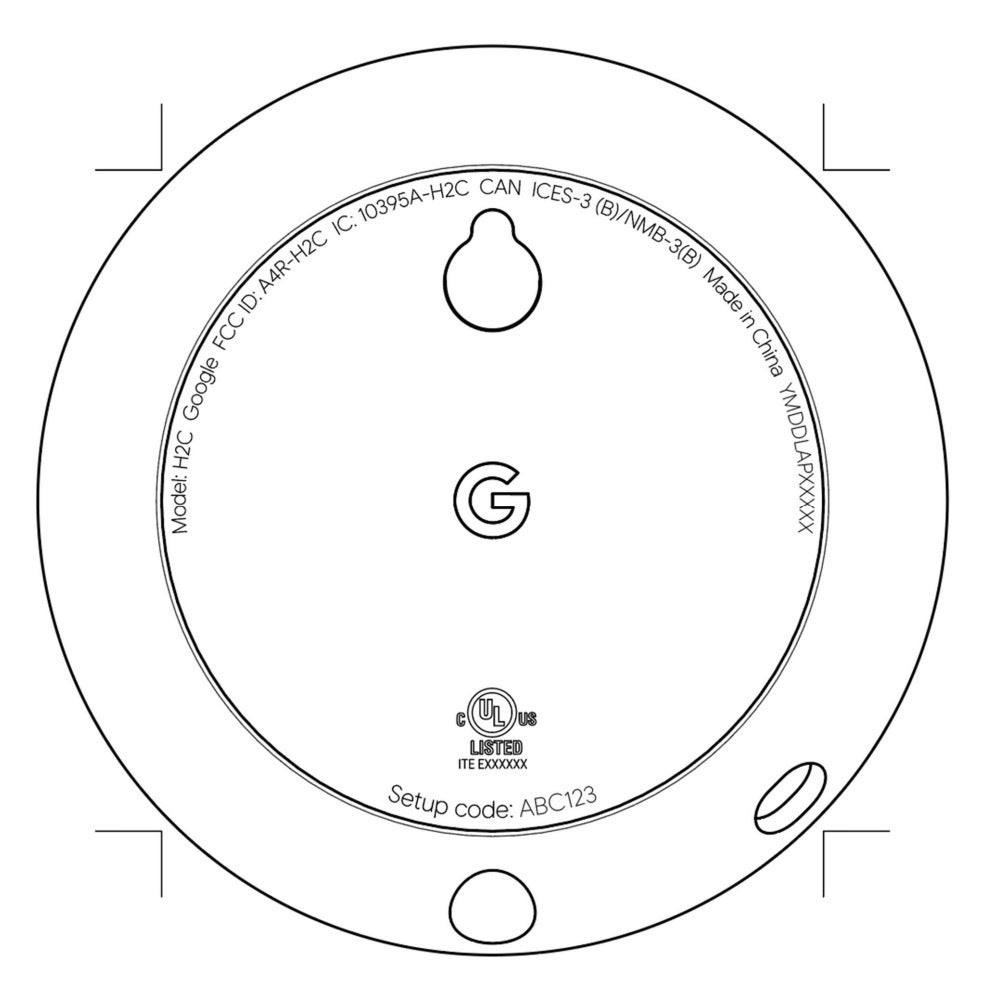FCC documentation confirms at least one new feature for Google's entry-level speaker

Last month we told you that Google was renaming its smart speaker and smart display line. The Google Home devices now use the Google Nest branding, which makes sense since Nest is the name of the company's line of smart appliances for the home. Smart speakers and displays, which are often used to control such appliances, fit into this branding perfectly. And back in August, we told you to expect the next-generation Google Home Mini to wind up with the new moniker of Google Nest Mini.
The entry-level version of Google's speaker line is not only expected to be slightly larger, it will reportedly include a wall mount (more on that below), a 3.5mm earphone jack, higher quality sound and a proximity sensor that will display the current volume settings when someone approaches the unit. If it replaces the Home Mini, the Nest Mini could keep the latter's $49 pricing, although during holidays and special sales we could see it priced as low as $25.
With the next Made by Google event possibly taking place on October 15th, the Nest Mini apparently paid a visit to the U.S. version of China's TENAA regulatory agency (that's sort of an inside joke). You might be familiar with the agency by its initials, the FCC (via Android Police). The commission's Office of Engineering and Technology released papers filed by Google for an "interactive media streaming device" that offers both Wi-Fi and Bluetooth connectivity. While Google's request for confidentiality kept the FCC from showing the usual cool photos of the device with rulers in the foreground, the FCC did release a sketch of the bottom of the device; that is where the unit's FCC ID number will be displayed. We can see a model number of H2C and a cutout for a wall mount. Also of interest is the Setup code, which is something you would find on a Nest camera.
Google's new high-end 10-inch smart speaker, which has a built-in camera, launched in the states just a couple of days ago
The smart speaker market is one of the hottest tech sectors right now, growing in leaps and bounds the way smartphones used to. Global shipments surged ahead 55.4% year-over-year during the second quarter to reach 26.1 million units during the three-month period. The devices are popular because they are relatively cheap and connect with a home's Wi-Fi network. Consisting of a speaker and a virtual digital assistant, speakers like the Google Nest Mini can stream music; report the latest news, sports (including scores), stock prices and weather; set alarms and timers; send texts; make calls; order a rideshare; order a pizza; control smart appliances and much more.

The Google Nest Mini appears in FCC documentation with a cutout for a wall mount
A couple of days ago, Google finally got around to launching the Google Nest Hub Max, a 10-inch smart display priced at $229. And addressing a major complaint about the 7-inch Google Nest Hub (formerly the Google Home Hub), the new display comes with a camera. This means that users will be able to use the Google Duo app to make and receive video chats, something that the smaller model couldn't do because it didn't have a camera. The Nest Hub Max will allow you to view YouTube streaming videos and even watch live TV with YouTube TV. Recipes are easier to follow when following videos of how they are prepared, and displayed song lyrics will have you following the bouncing ball.
Amazon, which created the category in 2015 with the Echo, still had a leading 25.4% of the global speaker market during the second quarter. Google dropped from second to third as its market share was sharply sliced from 32.3% during last year's second quarter to 16.7% during the same time period this year. Will the new branding help Google's smart speaker devices get their groove back? We will know after the upcoming holiday shopping season, usually a very lucrative period for speaker sales.










Things that are NOT allowed: